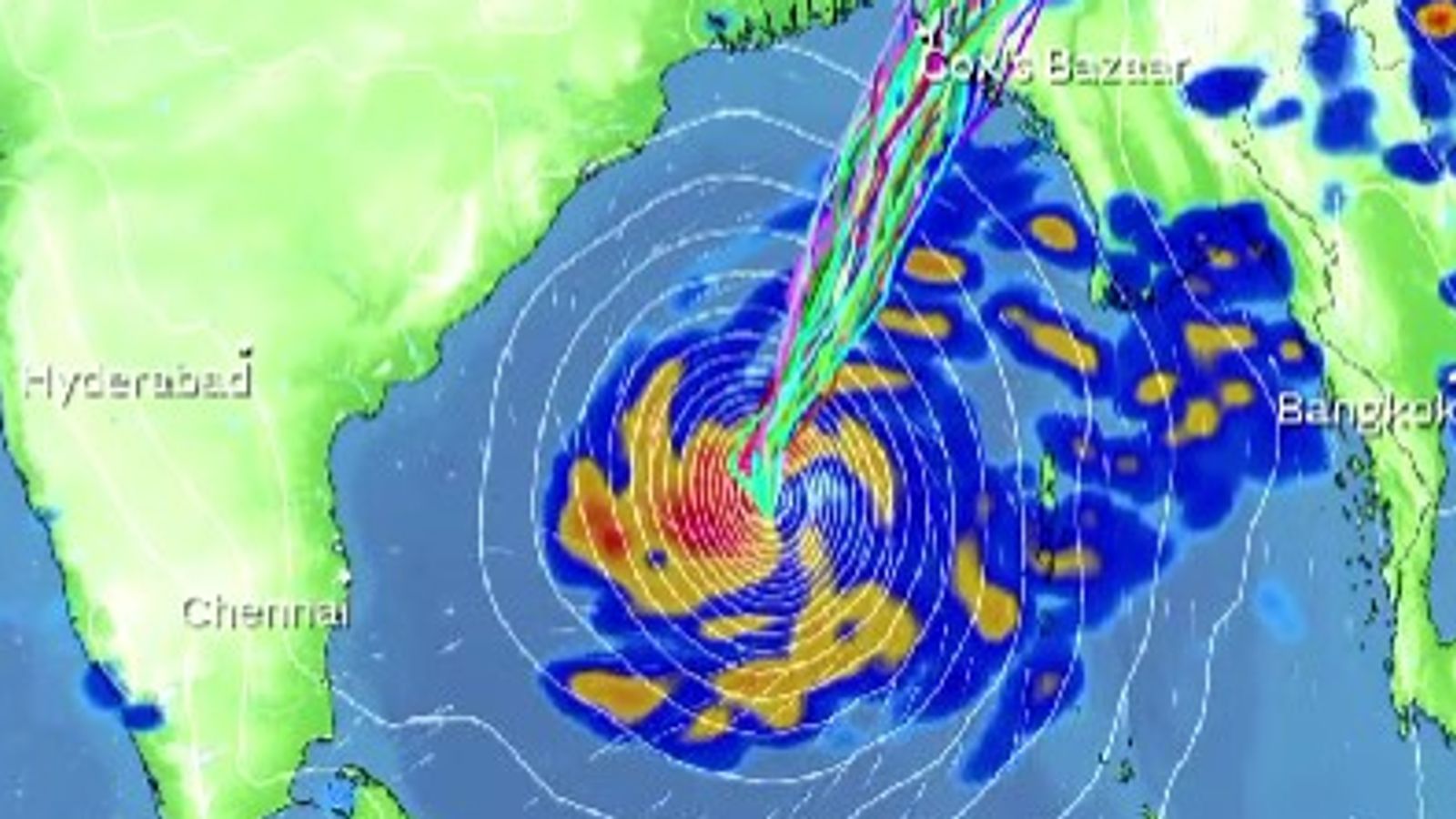Storm Mocha: ‘Very severe’ cyclone heading towards Bangladesh could wipe out world’s largest refugee camp

Authorities are preparing to rescue hundreds of thousands of people ahead of a “very severe” tropical cyclone on course to hit the biggest refugee camp in the world.
Storm Mocha is expected to unleash violent winds surpassing 110mph and trigger flash floods and potential landslides when it is set to make landfall in Bangladesh on Sunday.
The cyclone was on Friday deemed “very dangerous” by the World Meteorological Organisation (WMO), while warnings a storm surge of up to 2.5m (8.2ft) is likely to inundate parts of Bangladesh as well as low-lying areas of neighbouring Myanmar.
Although a direct hit is not expected, Storm Mocha’s path is set to impact Bangladesh’s southeastern border district, Cox’s Bazar, home to a million Rohingya refugees.
Just weeks earlier in March, thousands of people were left homeless after a huge blaze broke out in Cox’s Bazar.
Claire Nullis from the WMO told a news briefing in Geneva: “It’s a very dangerous cyclone and… it’s associated with violent winds.”
“There will be major impacts both ahead and after landfall for potentially hundreds of thousands of the world’s most vulnerable people,” she added.
India’s Meteorological Department earlier classed Storm Mocha as “very severe” – and said on Friday afternoon the weather system is “very likely to intensify further into an extremely severe cyclonic storm” overnight.
On Friday afternoon, Storm Mocha was mapped around 600 miles (1,000km) southwest of Cox’s Bazar and 580 miles (930km) southwest of Sittwe in Myanmar, according to India’s Meteorological Department.
Advertisement
The evacuation involving half a million people is expected to begin on Saturday, with almost 600 cyclone shelters assembled to provide refuge to those who have followed advice to avoid coastal areas.
“The cyclone is severe and will likely affect millions of fishers and coastal communities in Bangladesh and Myanmar,” said Rajendra Kumar Jenamani, a senior scientist at the Indian Meteorological Department.
The UK Met Office described Storm Mocha as “very severe”, tweeting a picture of the extreme weather system as it turns north across the central Bay of Bengal.
Click to subscribe to ClimateCast wherever you get your podcasts
Fishermen and ships have also been advised not to venture into the southeastern Bay of Bengal and northern Andaman Sea.
Heavy downpours are also expected over the Andaman and Nicobar islands together with parts of India’s remote southeast.
Read more:
This area in Spain could become too hot for tourists
Severe drought in east Africa would not have happened without human activity
Please use Chrome browser for a more accessible video player
0:33
June 2022: Floods in Bangladesh wreak havoc
The extreme weather system is set to arrive less than a year after dozens were killed and millions of homes were submerged by devastating floods in northeastern India and Bangladesh last June.
Months later in October, Tropical Storm Sitrang claimed the lives of at least 24 people in Bangladesh, leaving around eight million people without power.
Experts say climate change is ramping up the frequency, ferocity and unpredictability of floods in Bangladesh.